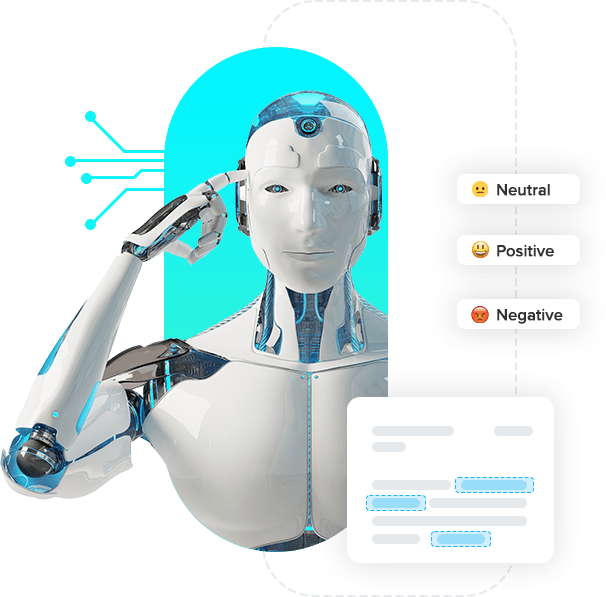Understanding what people think and feel about your brand, product, or service is like striking gold in today’s data-driven world. Enter sentiment analysis, a powerful tool that turns the chaos of human emotions into actionable insights. But what exactly is sentiment analysis, and how can it transform your business? Let’s dive into the world of sentiment analysis solutions and discover how they can give you the edge you need.
Sentiment Analysis Solutions: Unveiling Insights to Boost Your Business Performance

What is Sentiment Analysis?
Sentiment analysis, often known as opinion mining, is the process of evaluating and understanding people’s emotions and attitudes expressed in written text. By leveraging algorithms and natural language processing (NLP), sentiment analysis solutions can identify whether the sentiment behind a piece of text is positive, negative, or neutral. Imagine being able to read minds, but instead of telepathy, you have a sophisticated algorithm doing the heavy lifting.
Importance in Modern Business
In today’s fast-paced digital world, businesses are bombarded with feedback from customers across various platforms like social media, blogs, and review sites. Understanding this feedback is crucial for staying competitive. Sentiment analysis helps businesses gauge public opinion and make informed decisions, from marketing strategies to product improvements.
How Sentiment Analysis Works
1. Data Collection
The first step in sentiment analysis is collecting data from multiple sources, such as social media platforms, customer reviews, and forums. This data provides a rich source of insights into consumer opinions and trends.
2. Natural Language Processing (NLP)
Once the data is gathered, NLP comes into play. NLP involves the use of algorithms to break down human language into a format that machines can understand. This process involves tokenization, part-of-speech tagging, and syntactic parsing, among other techniques.
3. Machine Learning Algorithms
Machine learning algorithms are the backbone of sentiment analysis. These algorithms learn from the data to identify patterns and predict sentiment. They are trained on labeled datasets to recognize features that signify positive, negative, or neutral sentiment.
Types of Sentiment Analysis
1. Polarity Detection
Polarity detection is the most common form of sentiment analysis. It focuses on determining whether a piece of text is positive, negative, or neutral. Think of it as a thumbs-up or thumbs-down system.
2. Emotion Detection
Beyond polarity, emotion detection delves deeper into the specific emotions expressed in text, such as joy, anger, or sadness. This provides a richer understanding of consumer sentiments.
3. Aspect-Based Sentiment Analysis
Aspect-based sentiment analysis goes a step further by identifying sentiment related to specific aspects of a product or service. For example, a restaurant review might highlight positive comments about the food but negative remarks about the service.
4. Multilingual Sentiment Analysis
In a globalized world, analyzing sentiments in multiple languages is essential. Multilingual sentiment analysis tools can understand and interpret emotions across different languages, providing a more comprehensive view of global customer opinions.
Applications of Sentiment Analysis
1. Customer Feedback Analysis
By analyzing customer feedback, businesses can identify areas of improvement and gauge overall customer satisfaction. This is crucial for enhancing products and services to better meet customer needs.
2. Brand Monitoring
Sentiment analysis helps in tracking brand reputation by monitoring mentions and discussions online. Companies can quickly identify and address negative sentiments before they escalate into bigger issues.
3. Market Research
Understanding consumer preferences and trends is vital for effective market research. Sentiment analysis provides valuable insights into what customers like or dislike about a product or service.
4. Product Development
By analyzing feedback and reviews, companies can identify features that are popular among users and those that need improvement, guiding future product development.
Benefits of Using Sentiment Analysis Solutions
1. Improved Customer Experience
By understanding customer sentiments, businesses can tailor their offerings to better meet customer expectations, leading to improved satisfaction and loyalty.
2. Enhanced Marketing Strategies
Sentiment analysis helps in crafting targeted marketing campaigns by understanding what resonates with the audience. This leads to higher engagement and conversion rates.
3. Real-Time Insights
With real-time sentiment analysis, businesses can quickly respond to customer feedback, capitalize on positive sentiments, and mitigate negative ones.
Challenges
1. Handling Sarcasm and Irony
Sarcasm and irony are notoriously difficult for machines to detect, often leading to misinterpretations. This is an area where human intuition still surpasses machine capabilities.
2. Cultural and Contextual Nuances
Different cultures and contexts can affect how sentiments are expressed. Sentiment analysis tools need to be sophisticated enough to recognize these nuances to avoid inaccuracies.
3. Data Quality and Volume
The accuracy of sentiment analysis is heavily dependent on the quality and volume of data. Incomplete or biased data can lead to erroneous conclusions.
Popular Sentiment Analysis Tools and Platforms
1. AIM Technologies
AIM Technologies provides cutting-edge sentiment analysis tools that are user-friendly and highly customizable, perfect for various business needs.
2. IBM Watson
IBM Watson offers advanced sentiment analysis capabilities with its powerful AI-driven tools. It’s known for its accuracy and ease of integration.
3. Google Cloud Natural Language
Google Cloud Natural Language provides sentiment analysis with support for multiple languages and easy integration with other Google services.
4. Lexalytics
Lexalytics specializes in extracting sentiment and themes from text, offering robust solutions for businesses of all sizes.
Implementing Sentiment Analysis in Your Business
1. Choosing the Right Tool
Selecting the right sentiment analysis tool depends on your specific needs, budget, and the platforms you want to analyze. It’s essential to compare features and performance before making a decision.
2. Integration with Existing Systems
Ensure that the sentiment analysis tool you choose can integrate seamlessly with your existing systems to maximize efficiency and ease of use.
3. Training Your Team
Proper training is crucial for successfully implementing sentiment analysis. Your team should understand how to interpret results and apply insights to business strategies.
Future Trends
1. Advanced NLP Techniques
As NLP techniques advance, sentiment analysis tools will become even more accurate and capable of understanding complex human emotions.
2. Integration with AI and IoT
The integration of sentiment analysis with AI and IoT technologies will enable more personalized and responsive customer interactions.
3. Personalized Customer Interactions
Future sentiment analysis solutions will focus on creating personalized experiences by understanding individual customer preferences and emotions.
Conclusion
Sentiment analysis is revolutionizing the way businesses understand and engage with their customers. By leveraging these solutions, companies can make informed decisions, enhance customer experiences, and stay ahead in the competitive market. As technology continues to advance, the potential of sentiment analysis will only grow, offering even more valuable insights and opportunities. To see these powerful tools in action, request a demo from AIM Technologies and discover how sentiment analysis can transform your business strategies.
FAQs
1. What is the main purpose of sentiment analysis?
- The main purpose of sentiment analysis is to understand the emotions and opinions expressed in text, allowing businesses to make informed decisions based on customer feedback.
2. How can sentiment analysis benefit small businesses?
- Sentiment analysis helps small businesses by providing insights into customer preferences and satisfaction, enabling them to improve their products and services.
3. What are some common challenges in sentiment analysis?
- Common challenges include detecting sarcasm and irony, handling cultural nuances, and ensuring data quality and volume.
4. Can sentiment analysis tools understand multiple languages?
- Yes, many sentiment analysis tools offer multilingual support, allowing businesses to analyze sentiments across different languages and regions.
5. How does sentiment analysis improve customer experience?
- By understanding customer sentiments, businesses can tailor their offerings to better meet customer needs, leading to improved satisfaction and loyalty.




